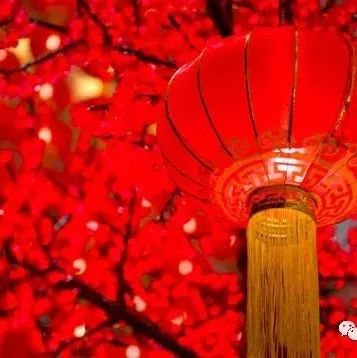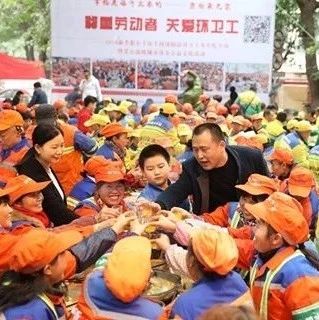黄帝内经的英文
发音:
"黄帝内经"怎么读"黄帝内经"的汉语解释用"黄帝内经"造句
英文翻译 手机版
手机版
- huangdi neijing
- huangdi's internal classics
- "黄帝"英文翻译 Yellow Emperor,a legendary r ...
- "内经"英文翻译 Neijing; the Internal Canon ...
- "黄帝内经素问" 英文翻译 : plain questions of huangdi's internal classic
- "huangdi黄帝内经太素" 英文翻译 : huangdi neijing taisu grand simplicity of inner canon of
- "黄帝内视法" 英文翻译 : huangde inner inspecting formula
- "黄帝" 英文翻译 : yellow emperor, a legendary ruler◇黄帝陵 mausoleum of yellow emperor; 黄帝庙 temple of yellow emperor
- "内经" 英文翻译 : neijing; the internal canon of medicine
- "黄帝陵" 英文翻译 : mausoleum of yellow emperor
- "黄帝庙" 英文翻译 : temple of yellow emperor
- "博帝内存" 英文翻译 : patriot memory
- "葛兰帝内提" 英文翻译 : dario grandinetti
- "黄帝轩辕氏" 英文翻译 : yellow emperor
- "黄帝阴符经" 英文翻译 : huangdi yinfujing
- "黄帝战蚩尤" 英文翻译 : br /3.the war between huang di and chi you; the war between huang di and chi you
- "轩辕黄帝" 英文翻译 : yellow emperor
- "场内经纪人" 英文翻译 : board broker; floor broker; floor trader
- "场内经纪商" 英文翻译 : floor broker
- "国内经济" 英文翻译 : domestic economy
- "内经十二脉" 英文翻译 : twelve pulse states discussed in canon of medicine
- "内经知要" 英文翻译 : abstracts of classic of internal medicine
- "场内经纪助理" 英文翻译 : clerk
- "国内经济活动" 英文翻译 : domestic economic activity
- "国内经济预测" 英文翻译 : forecast for home economics
- "厂内经济核算制" 英文翻译 : internal business accounting system
- "刺激国内经济需求" 英文翻译 : spur domestic demand
例句与用法
- It supplemented what huangdi ' s classic on medicine lacked
它补充了《黄帝内经》的不足。 - To date , this classic work is still considered as the theoretic - al , basis guiding traditional chinese medicine
《黄帝内经》至今仍然被视为指导中医的理论基础。 - Results : the frequency of jiao tone was much higher than those of the other tones in both groups ( p < 0 . 01 ) and the frequency of jiao tone increased as aging
方法:按《黄帝内经》理论,将健康女性以“五七”年龄为界分为年轻组( 34岁)和年长组( 34岁) 。 - Yellow emperor ' s classic of internal medicine , the theoretical work on tcm that emerged in the warring states period ( 475 - 221 bc ) , marks the establishment of chinese medicine ' s unique theoretical system
战国时期的中医理论著作《黄帝内经》标志着中国医学独特理论体系的形成。 - Objective : to find out some evidence that may indicate the theory of voice pitch of the five tones being correlated with the five zang viscera in huangdi neijing , which was lost 2000 years
摘要目的: 《黄帝内经》中有关于“五脏相音,可以意识”的记载,对针灸取穴则有“病变于音者,取之经”的论述。 - On the basis of articles concerning moxibustion in huangdi ' s internal classic , this paper discusses the origin , indications , clinical application , contraindications and techniques of moxibustion therapy
摘要根据《黄帝内经》有关艾灸条文,分析归纳艾灸疗法的起源、适应症、临床运用、禁忌症、补泻操作和壮数等。 - According to the classical theories of tcm in huangdi neijing , we consider that the record of liver located in the left of the human body is based on the ba gua ( eight diagrams ) of traditional chinese philosophy , not the human anatomy
通过研究《黄帝内经》 ,我们发现“肝生于左”实际上是指肝在中国传统文化卦象中的相对位置,而非人体脏腑的解剖学或形态学位置。 - The author believes to kick people and the natural another essential attribute from the " yellow emperor " - colored , this is not only the bright colors , more light color , black , white , yellow , green , red , and the natural life energy
笔者认为要揭开人与自然的另一个本质属性要从《黄帝内经》中的五色开始,这五色不仅是颜色,更是光色,即黑、白、黄、青、红,是人与自然生命的能量。 - The author has classified , compiled , organized , collated and annotated these ancient literatures such as a - b classic of acupuncture and motibustion , comprehensive notes to the yellow emperor ' s canon of internal medicine , classified canon , abstracts of the canon of internal medicine , etc , contrasted and concluded the classification feature , discussed the inheriting and developing , achievment and inadequate , pointed out the influence in the forming and developing of traditional chinese medicine basic theory and studing in canon of internal medicine for all of them
故对《针灸甲乙经》 、 《黄帝内经太素》 、 《类经》 、 《内经知要》等古医籍,从内容归类、编撰体例、结构安排、校勘注释等方面分析研究,对比、归纳其分类特点,探讨其继承与发展、成就与不足,说明其对学习《内经》 、对中医基础理论形成发展的影响。
其他语种
- 黄帝内经的法语:huangdi nei jing
- 黄帝内经的日语:黄帝内経
- 黄帝内经的韩语:황제내경
- 黄帝内经的俄语:Трактат Жёлтого императора о внутреннем
- 黄帝内经的印尼文:huangdi neijing;
- 黄帝内经什么意思:huángdì nèijīng [The Yellow Emperor's Internal Classic,The Yellow Emperor's Canon of Internal Medicine] 医书。简称《内经》。黄帝、歧伯等以问答的形式写成。是我国现存最早的一部医著,成书约在战国时期,其内容包括较长时期的多人作品。书中以医药理论为主,兼及针灸、方药的治疗。在朴素的唯物主义观点指导下...
百科解释
《黄帝内经》是现存最早中医理论著作,对后世中医学理论的奠定有深远的影响。相传是黄帝与岐伯、雷公、伯高、俞跗、少师、鬼臾区、少俞等多位大臣讨论医学的记述,但传统上多认为此书成书于战国时期,但也有学者认为成书应在西汉中。
详细百科解释
相关词汇
黄帝内经的英文翻译,黄帝内经英文怎么说,怎么用英语翻译黄帝内经,黄帝内经的英文意思,黃帝內經的英文,黄帝内经 meaning in English,黃帝內經的英文,黄帝内经怎么读,发音,例句,用法和解释由查查在线词典提供,版权所有违者必究。



